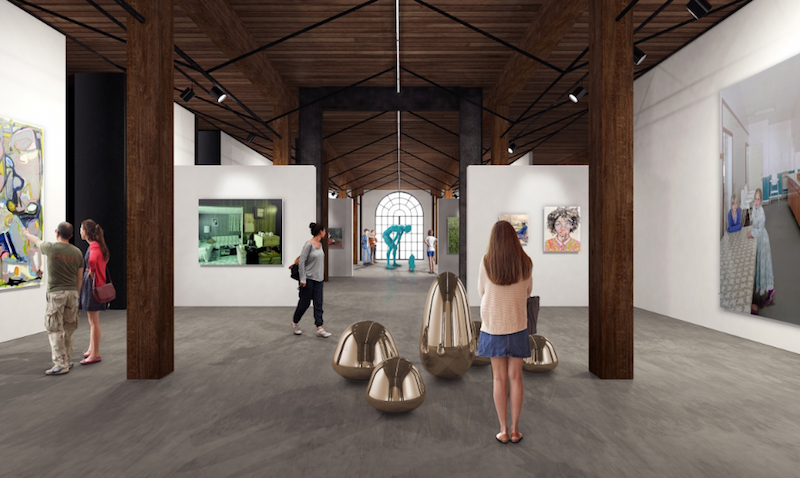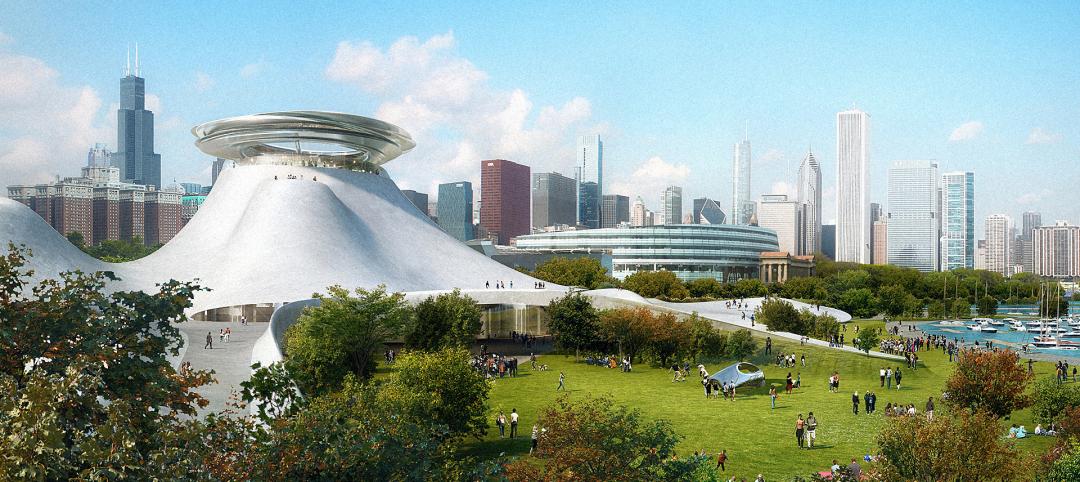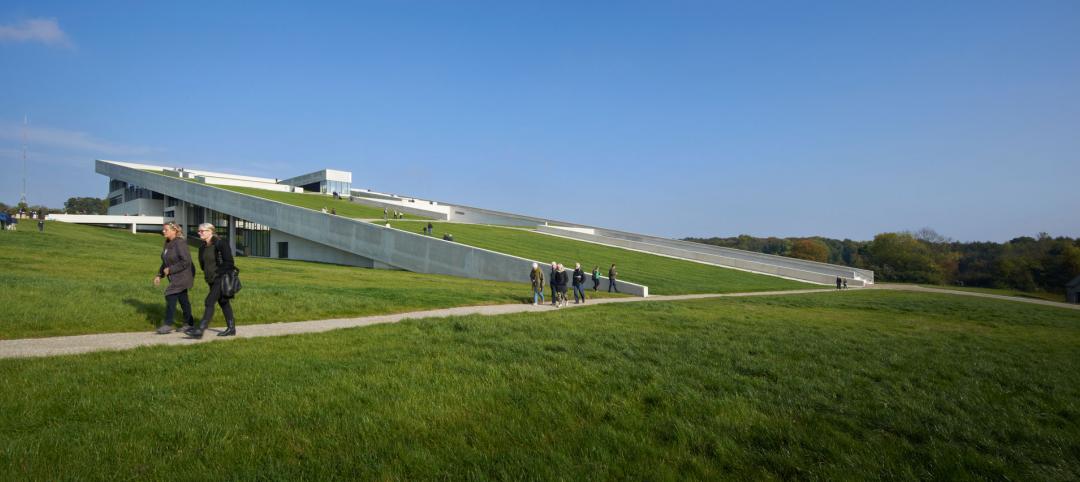Over the years, the 28,000-sf former textile-recycling factory that is home to Art Share L.A. has undergone numerous renovations, each one with its own specific purpose in mind. Now, a renovation of the entire building will create a cohesive layout to serve Art Share L.A.’s existing and envisioned programming and prioritize flexibility, openness, and connectivity.
Lorcan O’Herlihy Architects (LOHA) is in charge of the redesign that will clear away the fragmented build-up of previous renovations and try to capture the character of the original spaces while prepping them for new use.
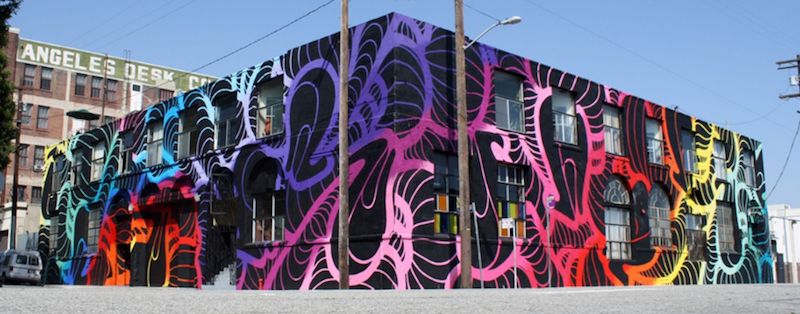 Rendering courtesy of LOHA.
Rendering courtesy of LOHA.
The new design strips away the redundant walls and circulation spaces to reveal the flexibility of the space and recapturing 30% of the building’s available square footage. The building’s manufacturing past will be visible in the brick walls, freight doors, concrete and wood posts, beam structure, and embedded train tracks.
The exhibition, performance, and administrative spaces will be reconfigured and expanded within the new space along a series of programmatic bands that are tied together through a cross-grain circulation pattern. The renovation will also consolidate the building’s multiple entrances into one main entry that can be open, safe, and accessible for extended periods of time.
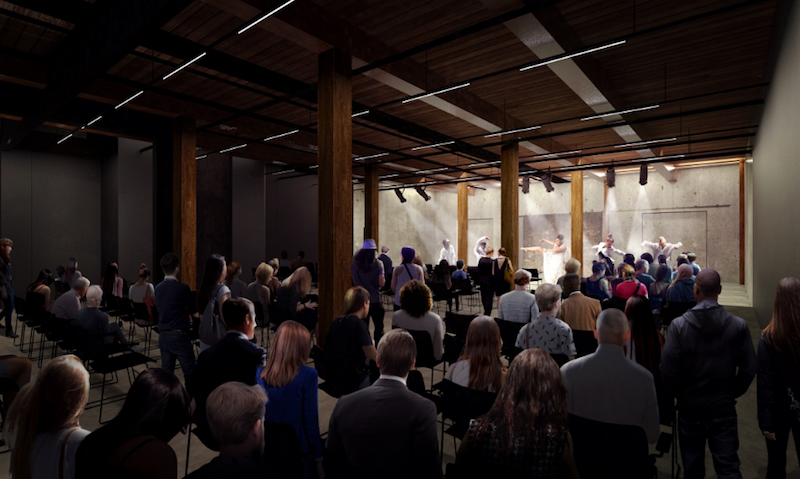 Rendering courtesy of LOHA.
Rendering courtesy of LOHA.
Social exchange is another key factor in the redesign as the interior spaces will extend outward and invite the surrounding Arts District to engage in the creative environment found within.
Related Stories
| Nov 14, 2014
Bjarke Ingels unveils master plan for Smithsonian's south mall campus
The centerpiece of the proposed plan is the revitalization of the iconic Smithsonian castle.
| Nov 12, 2014
Chesapeake Bay Foundation completes uber-green Brock Environmental Center, targets Living Building certification
More than a decade after opening its groundbreaking Philip Merrill Environmental Center, the group is back at it with a structure designed to be net-zero water, net-zero energy, and net-zero waste.
| Nov 7, 2014
NORD Architects releases renderings for Marine Education Center in Sweden
The education center will be set in a landscape that includes small ponds and plantings intended to mimic an assortment of marine ecologies and create “an engaging learning landscape” for visitors to experience nature hands-on.
| Nov 5, 2014
The architects behind George Lucas' planned Chicago museum unveil 'futuristic pyramid'
Preliminary designs for the $300 million George Lucas Museum of Narrative Art have been unveiled, and it looks like a futuristic, curvy pyramid.
| Nov 3, 2014
IIT names winners of inaugural Mies Crown Hall Americas Prize
Herzog & de Meuron's iconic 1111 Lincoln Road parking garage in Miami Beach, Fla., is one of two winners of the $50,000 architectural prize.
| Oct 29, 2014
Diller Scofidio + Renfro selected to design Olympic Museum in Colorado Springs
The museum is slated for an early 2018 completion, and will include a hall of fame, theater, retail space, and a 20,000-sf hall that will showcase the history of the Olympics and Paralympics.
| Oct 23, 2014
Prehistory museum's slanted roof mimics archaeological excavation [slideshow]
Mimicking the unearthing of archaeological sites, Henning Larsen Architects' recently opened Moesgaard Museum in Denmark has a planted roof that slopes upward out of the landscape.
| Oct 16, 2014
Perkins+Will white paper examines alternatives to flame retardant building materials
The white paper includes a list of 193 flame retardants, including 29 discovered in building and household products, 50 found in the indoor environment, and 33 in human blood, milk, and tissues.
| Oct 15, 2014
Harvard launches ‘design-centric’ center for green buildings and cities
The impetus behind Harvard's Center for Green Buildings and Cities is what the design school’s dean, Mohsen Mostafavi, describes as a “rapidly urbanizing global economy,” in which cities are building new structures “on a massive scale.”
| Oct 12, 2014
AIA 2030 commitment: Five years on, are we any closer to net-zero?
This year marks the fifth anniversary of the American Institute of Architects’ effort to have architecture firms voluntarily pledge net-zero energy design for all their buildings by 2030.


